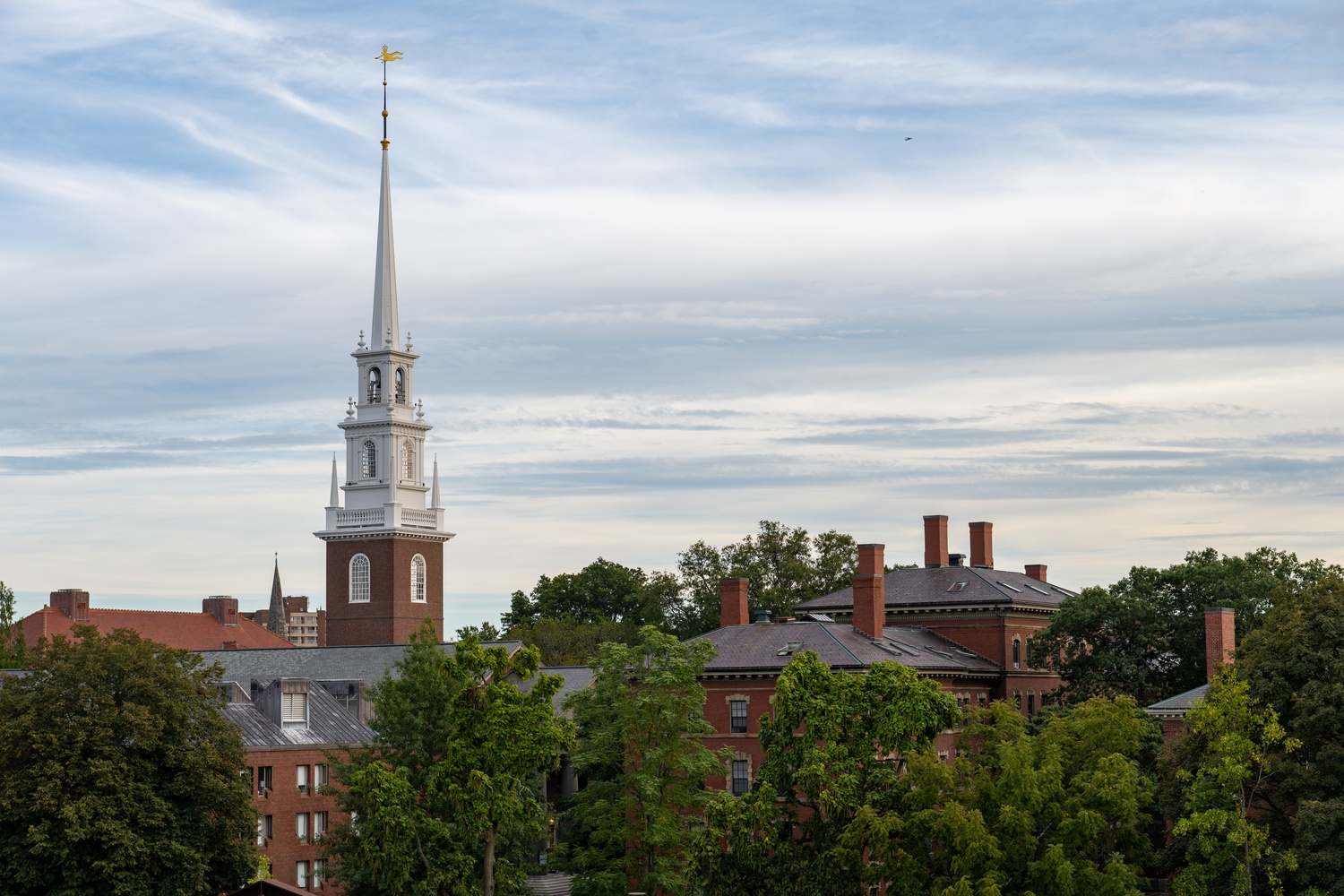
News
Summers Will Not Finish Semester of Teaching as Harvard Investigates Epstein Ties

News
Harvard College Students Report Favoring Divestment from Israel in HUA Survey

News
‘He Should Resign’: Harvard Undergrads Take Hard Line Against Summers Over Epstein Scandal

News
Harvard To Launch New Investigation Into Epstein’s Ties to Summers, Other University Affiliates

News
Harvard Students To Vote on Divestment From Israel in Inaugural HUA Election Survey
Trainings Can’t Stop Religious Bigotry. Here’s What Can.
Religious hate can take numerous forms, many of which aren’t always obvious.
In a recent conversation about antisemitism at Harvard, my friend and I discussed a caricature of Harvard President Alan M. Garber ’76 displayed at the 2024 encampment. The image of Garber with horns and a tail was disturbing. But what stood out most was my friend’s admission that they didn’t immediately recognize this trope as antisemitic. Having grown up with little exposure to Jewish tradition or history, they simply didn’t have the context to understand why the image was offensive.
This moment illuminated something deeply troubling: Harvard’s commitment to religious anti-discrimination is falling short because of a lack of education. While online trainings are well-intentioned, students need deeper engagement with religious traditions.
If Harvard wants to teach students to identify religious bigotry and respond with empathy, it must integrate religious literacy — an understanding of diverse faith traditions and their histories — into its required curriculum.
Undergraduates at the College hail from all fifty states and over 100 countries. Some may have been exposed to incredible diversity before matriculating, while others have lived in more homogenous communities. This diversity of background means that there is wide variability in students’ familiarity with different religious traditions.
A brief module can’t fill that gap. The University has devoted an online training which includes information about antisemitism and Islamophobia, but students who have no previous exposure to diverse faiths can’t be expected to fully understand age-old discrimination from less than an hour of content.
Our current trainings alone cannot help students understand complex topics like antisemitism or Islamophobia. Sitting at home before the semester and clicking through video units is not the same as meaningfully engaging with religious themes in one’s classwork. Reading examples of bias against certain groups off of a computer screen is distinctly different from understanding the rich history of a faith community and their interactions with the world in a classroom setting. Harvard has a responsibility to meaningfully enrich the student body with critical awareness of religion.
Religion is unique in that it touches almost all of us in different ways and has impacted nearly every aspect of global history, conflict, and identity. To understand its principle themes and ideas is to gain a valuable insight into the world.
Religious literacy — the ability to understand and respectfully engage with diverse religious beliefs, practices, and their social impact — is essential not only for spotting bigotry, but also for building empathy and cultural fluency.
That kind of learning is also foundational to a liberal arts education. If Harvard truly wants students to “think critically, reason analytically and write clearly” about complex topics, we must be informed about the traditions that have deeply influenced our world. If more courses beyond the Committee on the Study of Religion incorporate the rich traditions and histories of faith communities, students could understand the modern world — and respond to discrimination — much more deeply.
Incorporating themes of religious literacy into a wide range of classes wouldn’t require an overhaul of the curriculum. In fact, this integration could occur easily with our current course offerings and requirements.
The foreign language requirement, for example, lends itself quite naturally to reading and discussing religious texts and traditions in a cultural context. General Education courses could more directly address religious conflict, identity, and discrimination. Our humanities courses already include readings from great thinkers; they could analyze more religious texts alongside them.
As future movers and shakers, our education must inform us about the challenges communities around the world face. Identifying a negative stereotype or biased remark — or just grasping the impact of religion on contemporary society — is challenging without a basic understanding of the many communities represented among our student body.
In a world facing persistent conflict over religion, Harvard can’t allow ignorance to breed indifference. Our University must make an active effort to integrate religion into our academic framework. Understanding faith will not only make campus more informed, but also more inclusive.
Ira Sharma ’28, a Crimson Editorial Editor, is an Economics concentrator in Mather House.
Want to keep up with breaking news? Subscribe to our email newsletter.

